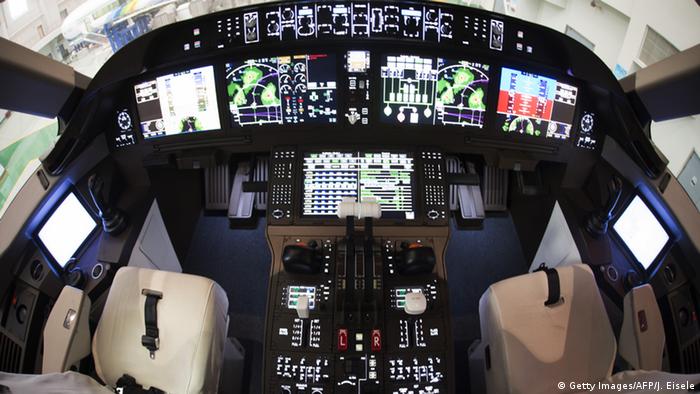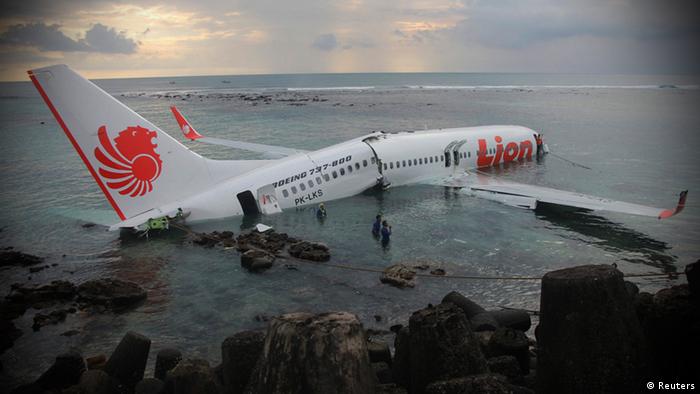A plane from the low-cost airline Ryanair had to land on Friday night in Germany after a pressure drop in the cabin. The plane had left the Irish capital of Dublin for the Croatian seaside resort of Zadar, but was diverted to the airport of Hahn near Frankfurt, complaining of several passengers' headaches, ears and nausea, "reported on Saturday (14.07.2018) the German border police
After disembarking, 33 passengers were transported to the hospital. The Boeing 737-800 vessel carried a total of 189 people. Ryanair reported that the crew had ordered the use of oxygen masks and had conducted a controlled descent of the aircraft. Nurses and doctors attended the passage upon their arrival in Hahn. Those most affected were transferred to the hospital for an outpatient medical examination.
The airline sent another aircraft to make the flight, which left this afternoon in Croatia. A total of 22 passengers preferred to continue the bus trip. The causes for which the cabin has been depressurized are still unknown. "It's something that specialists will need to clarify, but it will take time," said a police spokesman.
A passenger of flight FR-7312 quoted by the newspaper Frankfurter Allgemeine Zeitung reported roaring in the cabin and that temperature immediately dropped. Oxygen masks fell from the ceiling while a voice warned that an emergency descent would be made. The passenger added that in the beginning there were panic reactions but shortly after the calm was restored. Many passengers complained of earaches and some of their ears were bleeding. A woman was removed from the plane on a stretcher
"The depressurization can occur, but in very rare cases, it poses real problems," said Janis Georg Schmitt, spokesman for the # German Cockpit Association. In these cases, the plane is not likely to rush. This situation is regularly dragged into flight simulators, he added.
There are two types of depressurization, Schmitt said. There is a slow one, caused for example by a small hole in the walls of the cabin or by problems of the pressure system that pumps the air towards the cabin. In much less frequent cases, rapid depressurization may occur, which may be caused by a greater gap in the cabin, the loss of a window or a larger valve problem
"In this case, a roar is heard and the pressure and temperature collapse at all times. "Passengers have ear pain and even break a eardrum. Ryanair only pointed out that the plane had to land because of the pressure drop in the cabin, but did not give details of the causes or inconveniences suffered by the passengers.
On Friday, a depressurization incident made headlines in an Air China plane. In this case, the co-pilot had smoked an electronic cigarette and, in order to dispel the smoke, had bad buttons and caused a pressure drop. (dpa)
-
The classification of aviation safety
China Airlines does not fly high
In 2016, they traveled about 3,700 million passengers Those who have chosen a Chinese airline are those who are most at risk. The airline is ranked 60th in the ranking of the German institute JACDEC
-
Ranking of aviation safety
High risk in Indonesia
] The third worst company according to JACDEC is Garuda Indonesia, which earned 0.770 points, so it is not advisable to travel there. Since 1950, when it was founded, the airline has reported 47 accidents. In 22 of them, the total casualties were 583.
-
The security classification aerial
ranking without balance?
The JACDEC ranking has been severely criticized because it makes no distinction between technical errors, human errors, or if terrorism was the cause of the accident. 10% of accidents are attributed to terrorism. Simon Ashley Bennett, aviation safety expert at the University of Leicester, explains that a terrorist attack on an airplane is unlikely …
-
The aviation security classification
bad weather
… as bad weather causes an accident. According to the latest data, 10% of accidents are caused by snow, ice, fog and storms. The rays are not as dangerous as many believe. A more likely cause of accident is …
-
Aviation Safety Classification
Technical Error
the planes have a very modern technology. According to expert Bennett, 20% of accidents are due to technical defects. However, the biggest cause of accidents is …
-
The Classification of Aviation Safety
The Human Factor
The Pilots Are the Factor highest risk, causing more than half of the accidents. The interaction between technology and humans is very complex, resulting in errors and the driver is responsible for any problem.
-
The ranking of aviation safety
A master in the air
In 2009, the l & # 39; landing on the Hudson River by pilot Chesley Sullenberger demonstrates that the skills of human pilots are not an obstacle to modern aviation. This event was one of three landings on the water, and there were no casualties. The 155 passengers survived.
-
Ranking of aviation safety
Can it be fixed?
Curiously, an airline gets a better score after repairing a plane that had a casualty-free accident. Many experts are wondering if it is safe to travel on this plane or not.
-
The ranking of aviation safety
More Ambiguities
Another criticism of the rankings is: when an airline in buy another, his points are reset. The airline Lauda, in 1991, recorded an accident in which there were 200 victims (photo). This accident did not affect the Australian airline after Lauda's purchase in 2004. In addition, the new airlines start with zero points.
-
The Aircraft Safety Classification
And the winner is …
Cathay Pacific, based in Hong Kong, was the airline the safest of 2016. Air New Zealand and Haunan Air are second and third places. The German airline Lufthansa is in twelfth position. 2016 was the year when the lowest number of accidents in the history of aviation was recorded.
-
The ranking of aviation safety
Of course but also scary
Last year, JACDEC recorded 321 victims of 39, air accidents. However, the "Aviation Safety Network" recorded four more deaths because it uses another counting method. The worst accident was that of the Bolivian airline LaMia, the plane crashed near Medellín. There were 71 casualties, including football players from the Brazilian league AF Chapecoense. Author: Insa Wrede.











